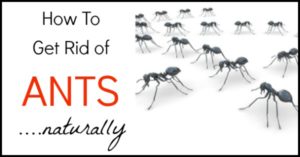 Argentinian Ants invade and attack: A non toxic remedy
Argentinian Ants invade and attack: A non toxic remedy
At first I thought maybe we lacked cleanliness, then I worried about termites, since some ants have a symbiotic relationship with termites, then I started asking neighbors if they also were being invaded, and many were. Our invasion extends to more than half the rooms in our house: the kitchen, one bathroom, 2 bedrooms and the pantry.
Argentine ants came like a lot of other non-indigenous insects, by hitching a ride on boats. They infiltrated the US and Europe about a hundred years ago, and they made some behavioral changes that have helped them proliferate. In their indigenous environments they warred with other colonies, but here, they’ve learned cooperate instead. The other thing that separates Argentine ants from other ants is that they have distinct, multiple colonies and several queens in each colony. If you have multiple queens and cooperating colonies, you up your chances for survival and you can usurp the territory of other kinds of ants. So the good news is that Argentine ants don’t conspire with termites; the bad news is that they are very hard to get rid of.
Argentine ants have a bite that is like a little pinch and leaves no welts…uncomfortable and nothing compared to the bite of a fire ant. Nevertheless, if they happen to like your bed, they can keep you awake by biting and crawling on you and they are busy 24/7. They are mostly looking for water, but will exploit any available food and will swarm around any kind of food left out, or accidentally dropped. They seem to like honey more than sugar—me too.
So how do you get rid of them? One friend (in Silverlake) told me she had an exterminator come, spray and afterward, no Argentinian ants. From what I’ve read, spray extermination works, though only for a short time. A neighbor, who was similarly plagued, used boric acid (recipe below) and seems to have been successful, but it takes time and diligence. On average, it takes a month to six weeks for the boric acid formula to reach all the colonies and kill all the queens, but it works, and it does not kill other animals. And here’s an odd observation: Argentine ants will not walk on paper towels, though I don’t know why. I thought about flooring and wallpapering the entire house with paper towels on sleepless, creepy crawling, bite-pinch nights. These kinds of invasions can drive a person bonkers.
Squirrel tip: I’m not the only one with a squirrel problem in the canyon and I recently hit upon a fairly easy fix: the hottest chili power you can find (India Sweets and Spices has the super hot variety.) All you need to do is sprinkle the chili powder around your plants so that when the squirrel gets the chili on its paws, while headed for your plants…well, it’s no fun for the squirrel but it does not kill them either. You can also mix the chili powder with water, dish soap and spray it on the plants. If you make a spray you will need to sieve the concoction through a coffee filter or a bit of tightly woven fabric so that the chili does not clog the spray nozzle. You will have to be careful to wash or peel any fruits or veggies you plan on eating, or suffer the consequences. If you or your gardener use a blower, you will need to issue a warning, since getting airborne chili in your eyes or breathing it into your lungs is painful. Obviously, you would not sprinkle chili where your pets tread, since they will lick their paws.
HERE IS WHAT YOU WILL NEED
Boric acid (very inexpensive, can be found at most pharmacies and is generally used as an eyewash.) Borax in not the same as boric acid, you want boric acid, not Borax, which is boron.
Sugar or honey
Cotton balls
Small jars with caps (as few a five as as many as 10.) ideally, small glass jelly jars with screw on caps.
- 8 tsp sugar
- 1 cup water
- 1 tsp boric acid
mix 8 teaspoons of sugar with 1 cup of water and 1 teaspoon of boric acid; use warm or hot water to dissolve the boric acid and sugar (adjust to the amount you will need.) Argentine ants likely prefer honey to sugar, but sugar works. If they don’t like the solution, there’s either too much boric acid or not enough sweet stuff. Some recipes call for more boric acid than the one here—experiment. Punch holes in the lid of jars to allow ants easy access and to keep out other animals. Place the dissolved mixture into a small glass jars, place a cotton ball in the mixture so that the top of the cotton ball is above the liquid (allows ants to access the solution with drowning; if they are drowned they can’t get the solution into the colony.) Try to locate areas where ants are entering your home and place the jars where they can have easy access. If you can find the outdoor location, place them outside. Check the jars weekly and refill as needed. If the jars get a lot of sun they may be prone to quicker evaporation. Be careful of young children that are capable of unscrewing the jars and drinking the solution…it would not kill them, but it would be very unpleasant.
Expect the process to take four to six weeks, or you can weather the invasion by waiting for cooler weather, when the ants will return to their own territory and cease to invade yours! Yvonne Westbrook, MFT
![]()

